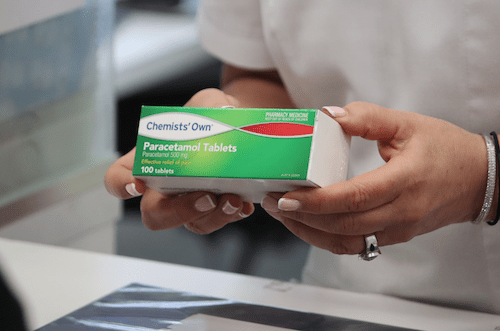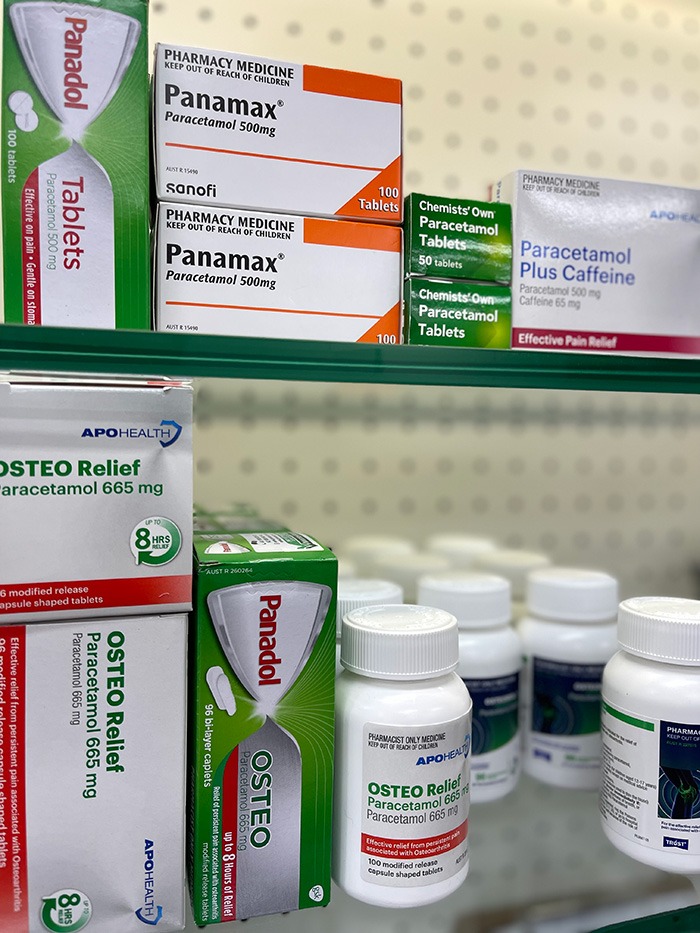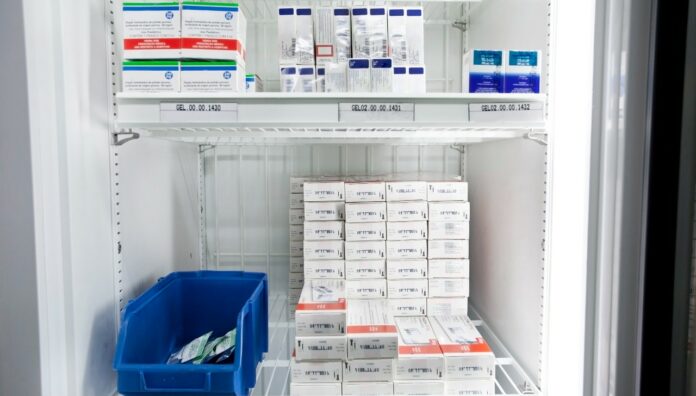From manual temperature checks to proper vaccine packaging, here’s what pharmacists need to know to protect patients, stock – and reputations.
Think you’ve mastered cold chain protocol? Think again. PSA’s Pharmacist-to-Pharmacist Advice Line receives more calls than you may think about risks to cold chain and possible breaches.
So what problems do pharmacists call with? PSA’s expert pharmacist advisors have rounded up some of their most pressing queries… and how they helped pharmacists find a resolution.
1. Do I still have to manually measure the fridge temperature if I have a data logger?
Yes!
A pharmacist who recently contacted the Pharmacist-to-Pharmacist Advice Line was surprised to learn during an audit that despite having a temperature data logger for her pharmacy’s vaccine fridge, she was not compliant with cold chain regulations, said Pooja Jadeja MPS.

‘Pharmacies are often under the impression that when they’ve passed Quality Care Pharmacy Program (QCPP) requirements, that they are up to date,’ she said.
‘But QCPP compliance doesn’t factor in this national guidelines requirement. And during an [regulatory] audit, they are informed that they have to manually log the maximum/minimum temperatures twice a day in order to be compliant with the “Strive for 5” National Vaccine Storage Guidelines.’
So why do pharmacists need to manually record this data when they have an automated process in place?
‘Data loggers are generally linked to the pharmacy email [account], and with the plethora of emails coming through, pharmacists often miss alerts and aren’t checking maximum/minimum temperatures on a daily basis,’ said Ms Jadeja.
‘Doing a manual check at the beginning and end of the day will identify a cold chain breach in a timely manner so that action can be taken accordingly.’
When a pharmacy is deemed non-compliant with the Strive for 5, they will need to sift through their data logs to prove their vaccine fridge has been within the required temperature range.
‘They would have to go in and check the data logger temperatures’ she said. ‘Then put a plan in place to ensure they are checking [temperatures] regularly, and submit that to the [health department] with evidence to show they have taken steps to record manual readings,’ she said.
2. What happens to NIP stock if the power goes out?
Severe storms hit Sydney and regional New South Wales in mid-January, leading to mass power outages.
One affected premise happened to be a small pharmacy, which went on to experience a cold chain breach.
‘The power outage went for over 15 minutes, so they had to dispose of all of their vaccine stock, including [National Immunisation Program] stock, and some private vaccines,’ said Ms Jadeja.
But before disposing of the vaccines, Ms Jadeja advised the pharmacy to declare the NIP stock that was affected by the cold chain breach.
‘Any cold chain breach of NIP stock must be reported to the relevant state or territory health department and then disposed of immediately,’ she said. ‘Then the pharmacy can place an order for new NIP stock.’
For any other vaccines or refrigerated medicine, a record must be kept on the length of the breach and what temperature the fridge reached.
‘This can be checked with either the fridge maximum/minimum temperature log at the front or via the data logger,’ said Ms Jajeda.
Pharmacists must consult the product manufacturer about next steps.
‘In 99% of cases, vaccines have to be disposed of, and that’s a loss the pharmacy takes,’ she said.
‘But other medicines may be okay for a certain period of time at a higher temperature, depending on how high the temperature went and how long it stayed at that temperature.’
3. Can vaccines be removed from their packing and stored in a basket in the fridge?
In short: it’s a very bad idea.
Vaccine packaging can be relatively bulky, particularly if it includes outer cartons, pre-filled syringes or vials with diluents, taking up valuable refrigeration space.
So what’s the harm in taking the product out of its original packing to fit more into the vaccine fridge?
One pharmacist found out exactly why this is not advisable post-audit.
‘When vaccines are exposed to light, this can degrade the vaccine and cause it to lose potency,’ said Ms Jadeja. ‘So this pharmacist had to throw out all the vaccines that had been removed from the packaging.’
According to Strive for 5 National Vaccine Storage Guidelines, the outer carton not only protects vials or syringes from light and temperature fluctuations when the refrigerator door is opened, but also includes critical information such as the batch number, expiry date, and product inserts – which may be important for reference and monitoring.
4. What’s the worst-case scenario in the event of a cold chain breach?
When one pharmacy’s fridge temperature was compromised, the team only realised a week later after checking the data logger that a significant cold chain breach had occurred.
From there, the pharmacy had to check how long the fridge temperature was affected and what temperature it reached to determine if each vaccine is still viable and effective, said PSA NSW State Manager Amanda Fairjones MPS.
‘Pharmacists should consult the vaccine manufacturer and ask if they have data to show the vaccine is still effective at 8° C, and at a maximum of 15°C, for example.’
In the case of a cold chain breach, pharmacists must report it to their local public health unit and isolate affected vaccines with a ‘DO NOT USE’ sign, and if possible, transfer them to another vaccine fridge while maintaining +2°C to +8°C.
Download and review the data log, keeping the logger in place if power fails.
But if push comes to shove, pharmacists may have to revaccinate patients who were immunised during the duration of the cold chain breach.
Getting on top of the issue early can help to prevent the unfortunate event of a media notification, as was the case with Holy Family Medical Centre in Sydney’s inner west.
More than 1,200 of the practice’s patients, including hundreds of children under 5 years of age receiving their first vaccinations, were advised that vaccines administered over a 4.5-year period might have been less effective due to improper storage.
This can not only undermine confidence in a business, but in vaccination more broadly.
Did you know you need to do an annual self-audit of cold chain?
To comply with national cold chain requirements, pharmacists must complete a Vaccine storage self-audit at least every 12 months.
‘This is something pharmacists should do [annually] to identify any gaps in their cold chain management protocol, which will ensure that they remain compliant with cold chain management,’ said Ms Jadeja.
The self-audit tool covers storage procedures, fridge certification requirements and having the cold chain breach protocol on display in the pharmacy.
‘It just ensures your pharmacy is ready for any incident that may occur, because you can’t plan for incidents,’ she said.
And if you are based in New South Wales, you may be paid a visit by an auditor sooner rather than later.
Because vaping regulations changed in 2024, with vaping products downscheduled to Pharmacist Only medicines, pharmacists are being audited more frequently.
‘These audits are designed to educate pharmacists on how to [prescribe] vapes in a compliant manner,’ said Ms Jadeja. ‘While they’re checking vaping products are stored correctly and whether we know how to do the [Special Access Scheme] approvals, they’re also checking everything else, including cold chain storage.’
For advice on all things pharmacy, ring PSA’s Pharmacist-to-Pharmacist Advice Line between 8.30am to 5.00pm AEST on 1300 369 772.



 PSA National President Associate Professor Fei Sim and Ged Kearney, Assistant Minister for Health and Aged Care Assistant Minister for Indigenous Health[/caption]
PSA National President Associate Professor Fei Sim and Ged Kearney, Assistant Minister for Health and Aged Care Assistant Minister for Indigenous Health[/caption]




 Pharmacists can help to reduce the amount of surplus paracetamol available in homes by being ‘champions for the change’, said Peter Guthrey MPS, PSA Senior Pharmacist – Strategic Policy.
Pharmacists can help to reduce the amount of surplus paracetamol available in homes by being ‘champions for the change’, said Peter Guthrey MPS, PSA Senior Pharmacist – Strategic Policy.

 What are the main vaccine-preventable diseases of concern for VFR travel?
What are the main vaccine-preventable diseases of concern for VFR travel?





